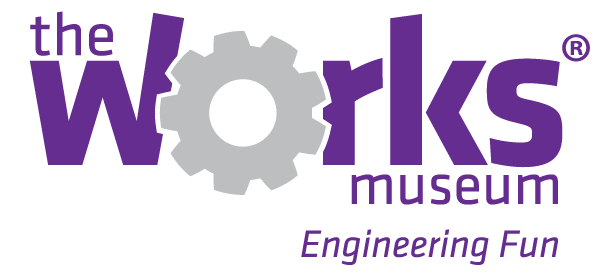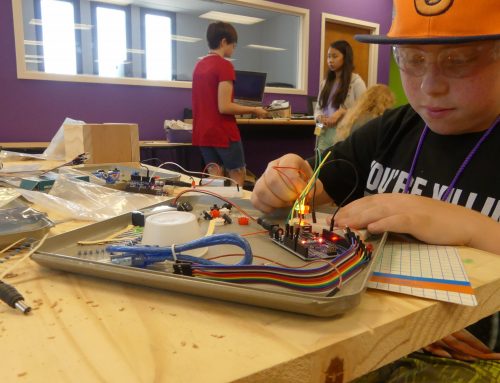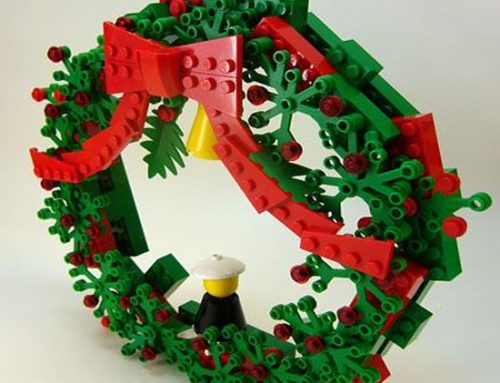The Works Brings STEM Workshops to the Classroom
For many of our visitors, the first introduction to The Works is a field trip visit. The combination of a Museum visit plus a STEM workshop makes for a fun, but still highly educational trip. For some schools, this just isn’t practical – maybe they’re too far away to organize transportation into the Twin Cities, maybe they want to offer workshops for several grades and the logistics are too complicated, or maybe there just isn’t enough room in the schedule or budget to arrange a several-hour field trip. This is where residencies and off-site workshops come into play. Our educators bring the same workshops that we do here at The Works Museum right into the classroom – no mess for the teachers, no parent chaperones to coordinate, no travel costs. This is a great chance to bring state-standard supporting STEM workshops to students that might not have a chance to visit.
STEM Fun in the Classroom
This past month, we had a wonderful experience doing a residency at Northwinds Elementary School in Buffalo, Minnesota. Over the course of two days, three of our educators led workshops with each of the third, fourth, and fifth grade classes. The students got to attend either a Light & Kaleidoscopes or Motor Power workshop, depending on their grade level. I’m fairly new at The Works, so I took part of the afternoon to sit in on these workshops to get a feel for them. Watching these kids spouting properties of light, or assembling a simple motor, was just incredible. The activities were super fun (I may have taken a few too many pictures of the kaleidoscope designs), and – I’m not lying one bit when I say this – I learned a LOT myself.
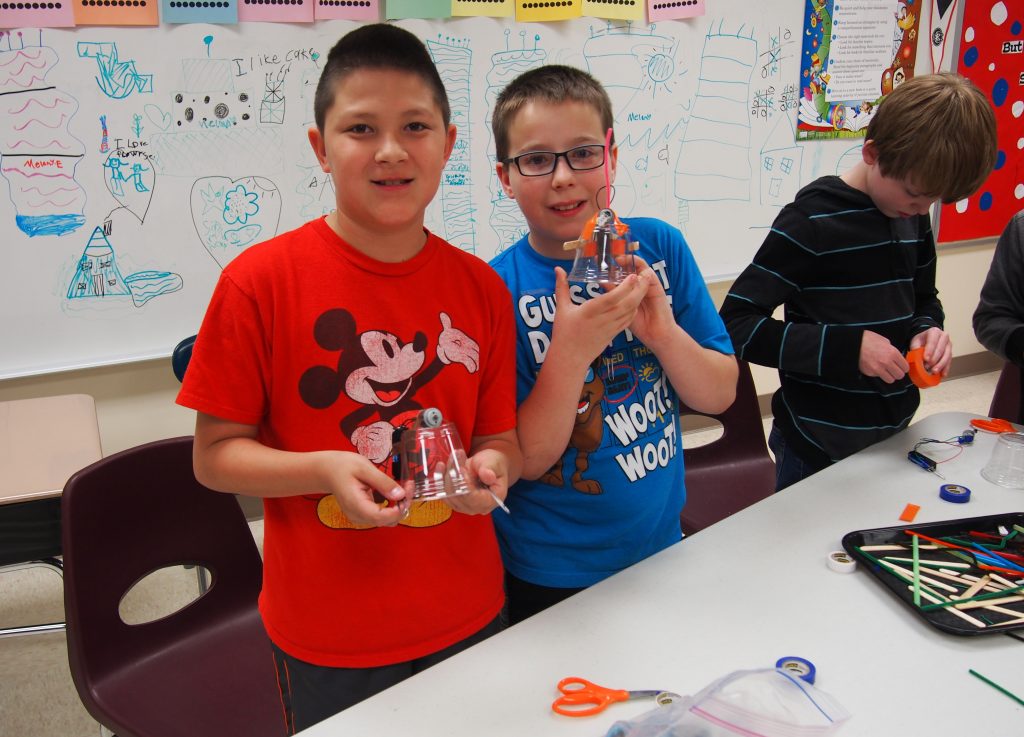
I’ll admit that when I first sat in on a Light & Kaleidoscopes workshop, I expected it to be pretty lame. How hard is it to put together a few mirrors? Really, it’s not hard at all, but the beauty of this workshop was the way the educators explained the concepts of light and reflection to the children. They set up several fun activities demonstrating light properties, and built up to the final activity of creating a take-home kaleidoscope. One by one as the kids finished their projects, I heard gasps of “SO COOL!” and “look at mine!” and “woooooooooow!” Then one of the kids let me try theirs out… aaaaand here comes the photo collage.
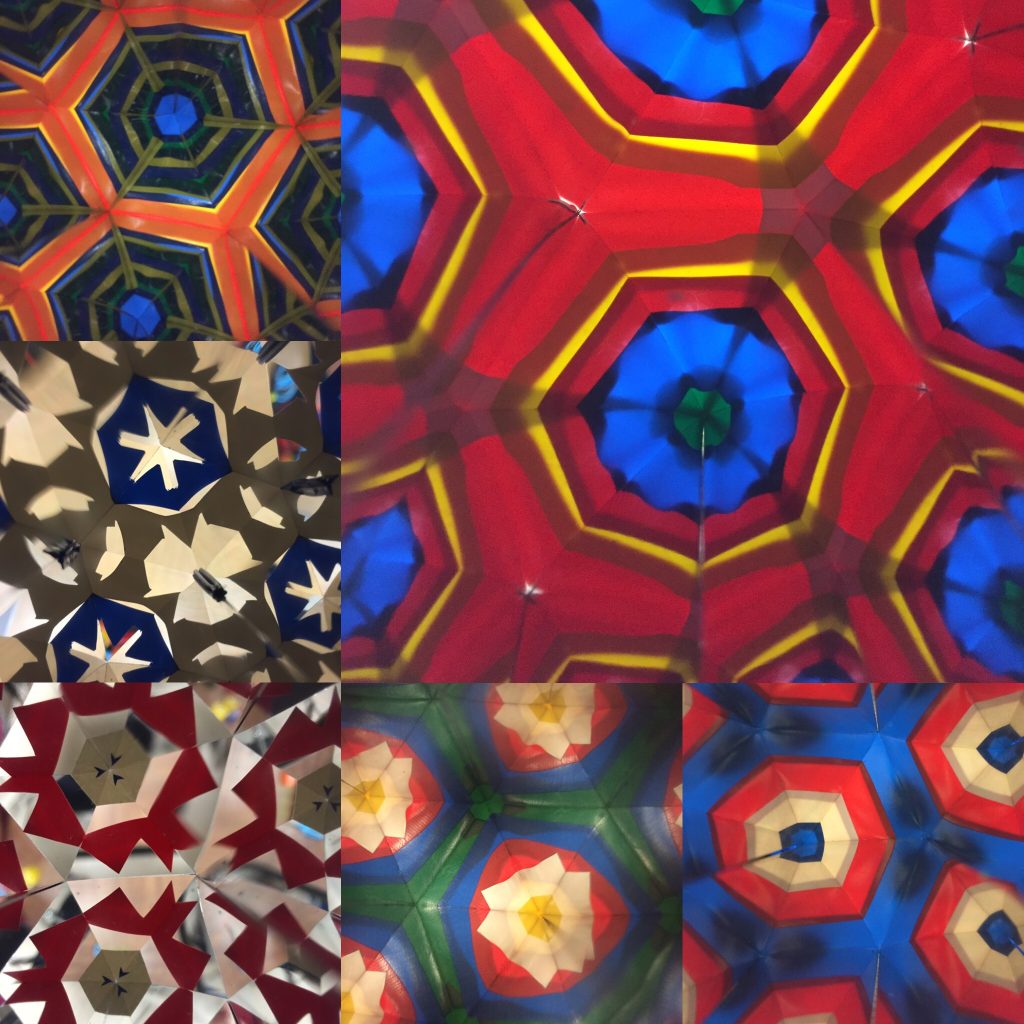
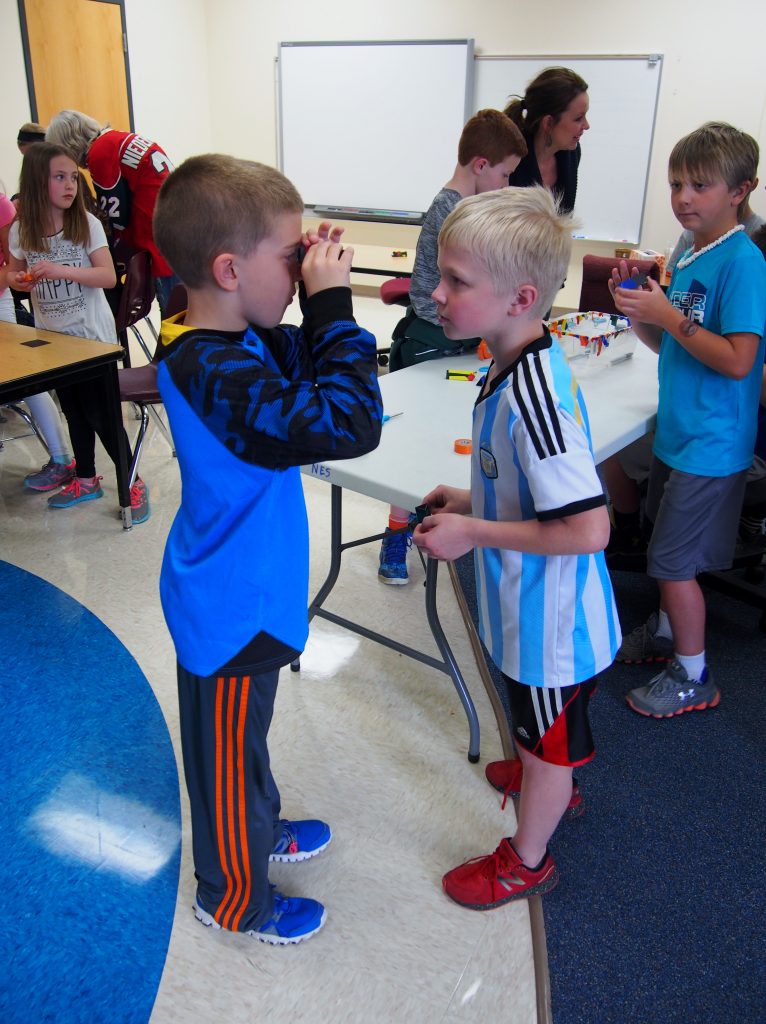
In the Motor Power workshop, the fourth graders learned the basic elements of how to make a motor. They experimented with different motor parts, and finally built their own wigglebots (simple motors + crazy decorations = adorable little dancing critters). You seriously can’t help but laugh at these wigglebots, and the fact that these kids were building motors just blows my mind. That’s not something I ever learned in elementary school.
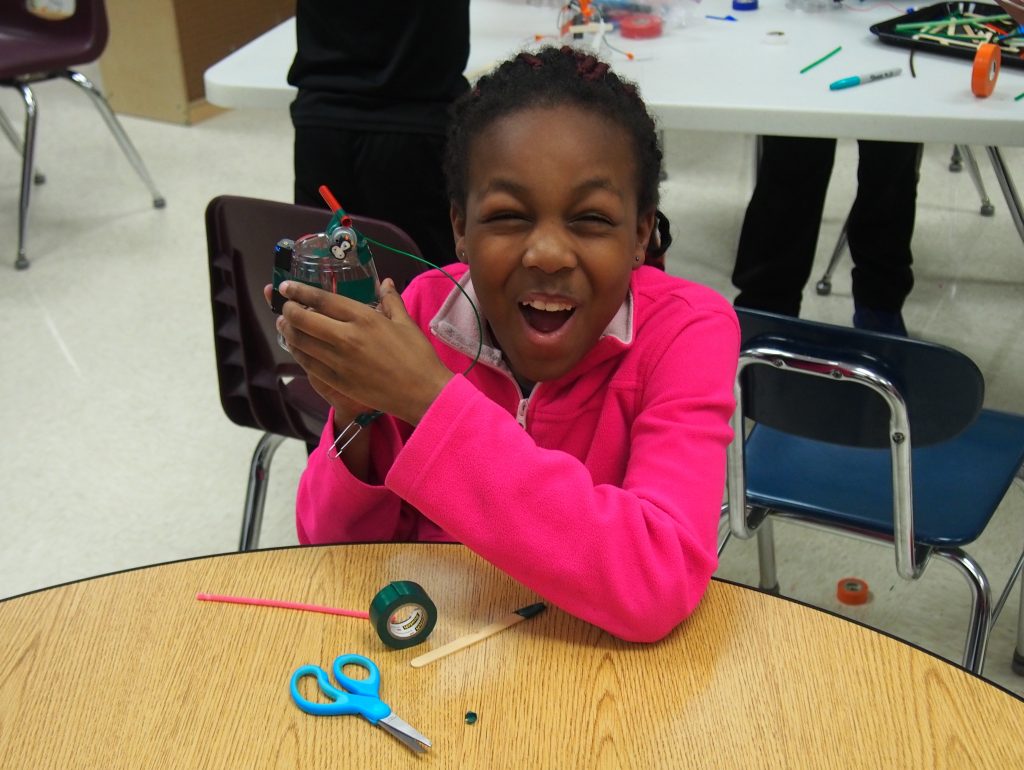
Bringing The Works to You
I asked one of our educators why she thinks some schools prefer to have us in the classrooms instead of in the Museum (aside from the obvious logistics). Her response: “Teachers occasionally pull out their own teaching materials to connect our workshop lesson to other lessons they have taught or will teach. It’s this flexibility that makes what we do so appealing to schools.” One of the things that I love about our workshops is that they are easily adaptable for different grade levels. Because our educators have experience working with children of all ages, they can make changes in how they present the material so that the activities are more appropriate for each grade level. As I observed a few workshops, it was fascinating to see how the educators tailored the content to a third grade class compared to a fifth grade class. Depending on what the students have covered that year, the educators can choose to go more in depth or take a few steps back to introduce new topics.
Another bonus of bringing workshops from an outside source is the natural increased engagement of the students. There’s just something about having a new face and fun activity that makes the kids excited to learn. Our educator Megan told me the story of a teacher who had been having a difficult time with one of her students. She was “blown away” by how engaged the students were, and how that particular student was able to focus and complete the activities. In my experience, hosting a workshop can be a breath of fresh air for teachers and students alike.
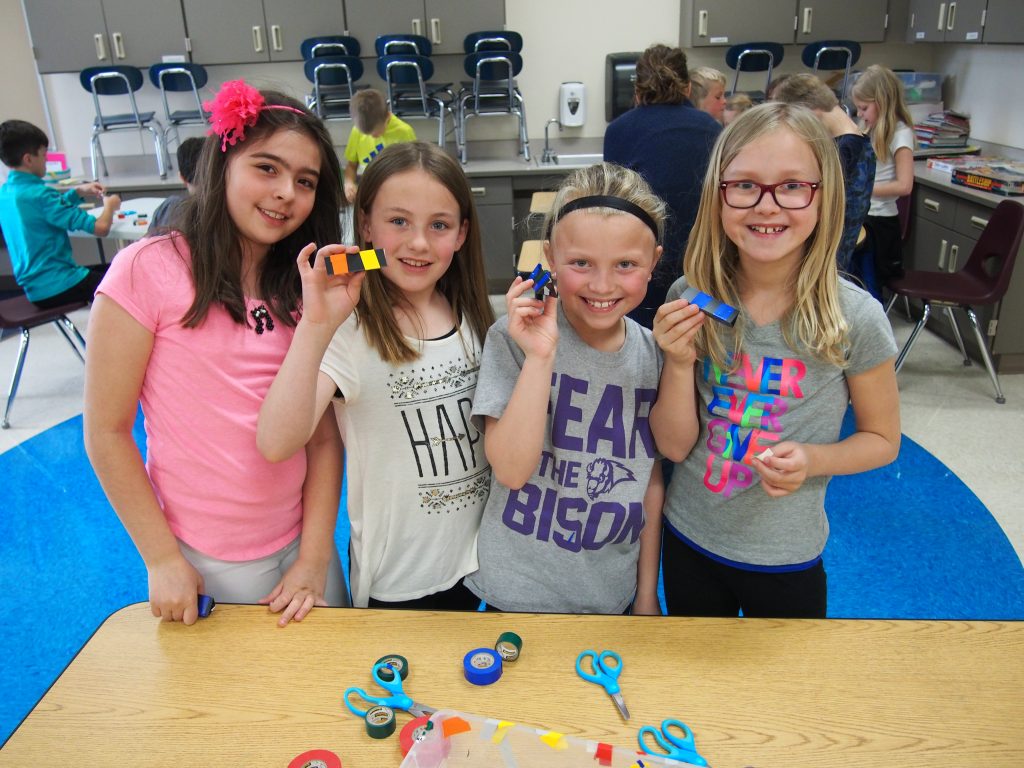
Ways to Connect
Here at The Works, we’re all about spreading our love of STEM, and we’ve got plenty of ways to do it. If you’re interested in having The Works out at your school, peruse our workshop topics or get in touch with us. Want to get the parents involved too? Consider a Family Engineering Night – The Works Museum provides engineering activities for parents and kids to do together, all the supplies needed for the engineering and science projects, and volunteer training. As a reminder – all of our workshops support the Minnesota K-12 Academic Standards in Science.
